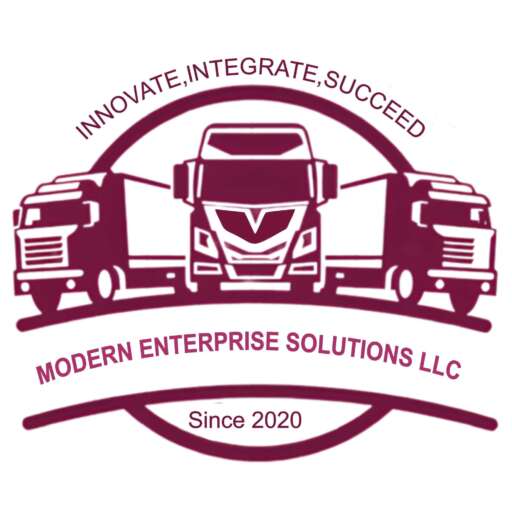In December 2017, the Federal Motor Carrier Safety Administration (FMCSA) officially implemented the Electronic Logging Device (ELD) mandate, transforming how the U.S. trucking industry operates. The mandate requires commercial drivers to use electronic logging devices to record their hours of service (HOS), replacing the paper logs that were traditionally used. The introduction of ELDs was aimed at improving road safety by ensuring compliance with HOS regulations and reducing instances of driver fatigue. While the mandate has had positive impacts, it has also presented challenges for truckers, particularly owner-operators and smaller fleets. This article explores the impact of the ELD mandate on U.S. trucking, from safety improvements to operational challenges.
What is the ELD Mandate?
The ELD mandate was introduced as part of the Moving Ahead for Progress in the 21st Century Act (MAP-21), a transportation funding bill signed into law in 2012. The FMCSA’s goal was to create a more accurate and efficient way of tracking HOS compliance to reduce fatigue-related accidents. The mandate applies to most commercial truck drivers who are required to keep HOS records, with a few exceptions for short-haul drivers and those using vehicles manufactured before 2000.
The key features of ELDs include:
- Automatic Recording of Driving Hours: ELDs automatically record driving time by syncing with a truck’s engine, ensuring accurate and tamper-proof logs.
- Real-Time Monitoring: ELDs allow carriers and enforcement agencies to monitor drivers’ HOS in real-time, reducing the risk of violations.
- Simplified Inspections: ELDs make roadside inspections quicker and more efficient, as drivers can easily transfer their HOS logs to inspectors electronically.
Safety Improvements: Reducing Fatigue-Related Accidents
One of the primary benefits of the ELD mandate has been its positive impact on road safety. By enforcing HOS regulations more rigorously, ELDs have helped reduce the number of fatigued drivers on the road. Fatigue is a leading cause of accidents in the trucking industry, and the FMCSA estimated that the ELD mandate would prevent over 1,800 crashes and save 26 lives annually.
- Accurate HOS Tracking: ELDs eliminate the possibility of falsifying driving hours, which was more common with paper logs. This ensures that drivers take required breaks and adhere to maximum driving time limits, reducing the risk of fatigue-related accidents.
- Better Driver Health: ELDs have also contributed to better driver health by promoting more consistent rest periods. Drivers are now more likely to take breaks and avoid the temptation to drive beyond legal limits, reducing stress and improving overall well-being.
Challenges for Owner-Operators and Small Fleets
While the ELD mandate has had clear safety benefits, it has also created challenges, particularly for smaller carriers and owner-operators. The initial costs of purchasing and installing ELDs, as well as adjusting to the new system, posed significant hurdles for many small businesses.
- Costs of Compliance: ELDs can range in price from $200 to $800 per unit, with monthly subscription fees for data transmission. For large fleets, these costs are manageable, but for small businesses or independent owner-operators, they represent a considerable expense. Additionally, some operators expressed concerns about the costs of maintenance and system upgrades.
- Operational Adjustments: The ELD mandate also required truckers to change how they managed their schedules. Unlike paper logs, which allowed for some flexibility in logging hours, ELDs are rigid in their recording, forcing drivers to strictly adhere to the time limits. For many truckers, this resulted in lost productivity and decreased flexibility in trip planning.
- Loss of Income: Owner-operators and small fleets reported concerns about a loss of income due to decreased driving time. Some drivers found it harder to complete trips within the allotted hours, leading to longer downtime and less freight moved per day. The pressure to meet delivery deadlines without violating HOS limits added further strain.
Industry-Wide Adjustments and Adaptations
Since the ELD mandate took effect, the trucking industry has had to adapt in several ways to minimize the negative impacts and capitalize on the benefits:
- Improved Fleet Management: Larger fleets, in particular, have embraced the technology, using ELD data to improve efficiency. By analyzing ELD data, carriers can optimize routes, reduce idle times, and ensure more consistent compliance with safety regulations.
- New Business Models: For smaller companies and owner-operators, the mandate spurred innovation in operations. Some drivers began specializing in short-haul trips to avoid the restrictions of long-haul HOS regulations. Others joined trucking companies to alleviate the burden of complying with the mandate independently.
- Broker and Shipper Adjustments: The ELD mandate has also forced shippers and brokers to adjust expectations for delivery times. With ELDs enforcing stricter driving limits, unrealistic delivery windows became less common. Brokers now consider HOS regulations more carefully when assigning loads to drivers.
ELD’s Role in the Future of Trucking
Looking forward, the role of ELDs in the trucking industry is set to expand as technology continues to evolve. Beyond basic HOS tracking, ELDs are becoming part of a broader ecosystem that includes fleet management systems, telematics, and data analytics. This integration promises to further enhance safety, efficiency, and compliance across the industry.
- Data-Driven Decision Making: ELDs provide valuable data on driver behavior, vehicle performance, and route efficiency. Carriers can use this data to make more informed decisions about fleet management, reducing costs, improving maintenance schedules, and boosting driver productivity.
- Potential for Automation: As autonomous trucking technology advances, ELDs could play a key role in managing hours and integrating driverless operations into the broader trucking landscape.
Conclusion: A Mixed Impact with Long-Term Benefits
The ELD mandate has undeniably transformed the U.S. trucking industry, bringing about both positive changes and significant challenges. While safety improvements and more consistent compliance with HOS regulations are clear benefits, the costs and operational constraints have created difficulties, particularly for smaller players in the industry. However, as the industry continues to adapt and technology evolves, the long-term benefits of the ELD mandate—both in terms of safety and efficiency—are expected to outweigh the challenges. For truckers, embracing ELD technology and its potential applications will be crucial in navigating the future of the industry.


Leave a reply